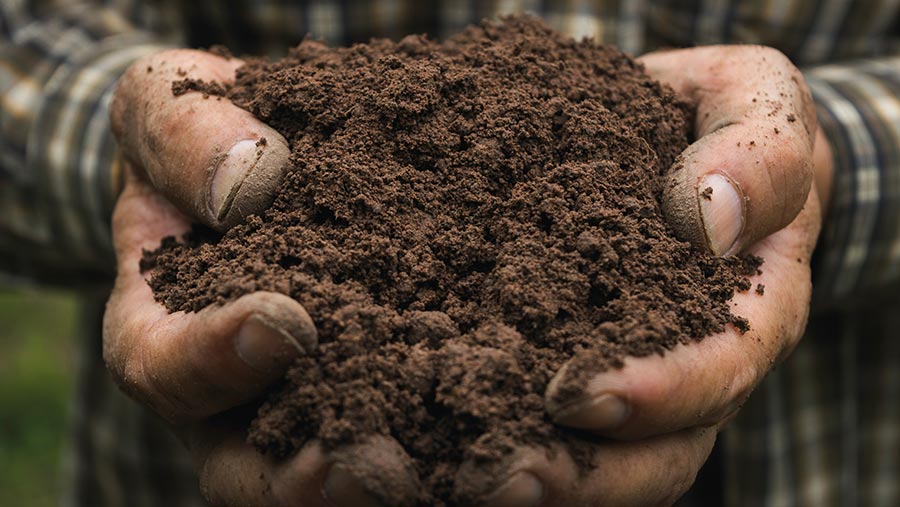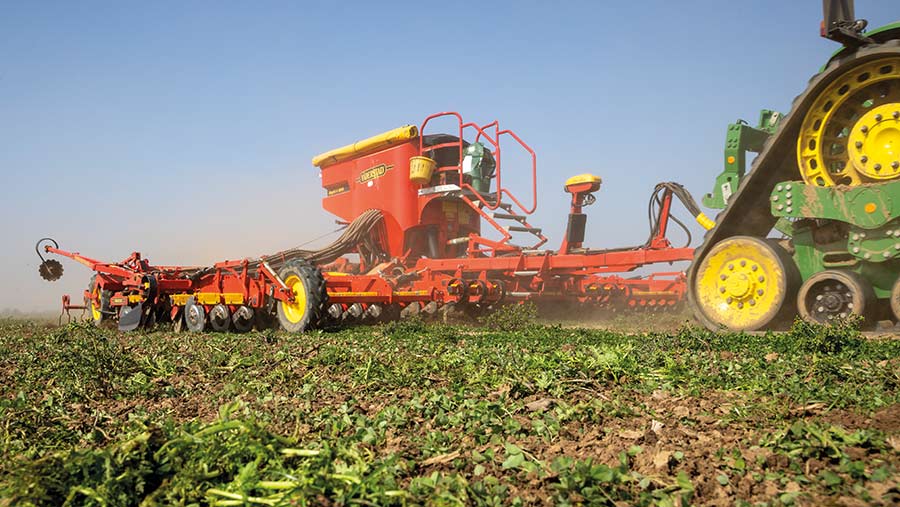Farm soil carbon: Is the focus on sequestration right?
 © Mintra/Adobe Stock
© Mintra/Adobe Stock Arable farmers must be realistic about the amount of carbon that can be locked up in soils and should be wary of exaggerated claims about sequestration, warns a leading soil scientist.
Big figures have been mentioned, but sequestering carbon in arable soils is not as easy as growers may have been led to believe, says David Powlson, Lawes Trust senior fellow at Rothamsted Research and visiting professor in soil science.
He points out that soil carbon has two functions – improving soil health and mitigating climate change – with the former being influenced by the flow of carbon through the soil.
“In this instance, a small change can have a big benefit on the functioning of the soil, so increasing soil carbon brings numerous benefits,” he says.
See also: How Hampshire grower became Soil Farmer of the Year
Climate change
To be effective from a climate change point of view, there must be additional transfer of carbon from the atmosphere to the soil from farm practices, not just a redistribution within the landscape.
“That can be difficult to grasp,” he says. “Using manures, for example, will always be good for soil health, but does not mitigate against climate change.
“In contrast, incorporating cover crops and using reduced tillage will result in a bigger soil carbon stock, even if they do concentrate it near the soil surface rather than at depth.”

© Gary Naylor
Measurement
A major limitation is that measuring changes in soil carbon is challenging and has to be done with a bulk density measurement, he says, as the shifts can be very small and take place over many years, with the rate of change slowing as soils reach equilibrium.
Sequestration occurs only when carbon is moved from atmospheric carbon dioxide through into the soil, via photosynthesis, he stresses.
“When organic matter is added to soil, only a small fraction of it becomes stable – around 10%. The rest is broken down by soil microbes and used for their various processes.”
Political focus
As there is a big stock of carbon in UK soils and the political focus has now switched from taking land out of production to looking at ways for growers to sequester carbon on land that will continue to be farmed, avoiding any unnecessary losses is important.
Food security has moved up the agenda, so there is little scope to take land out of production and efforts are now on soil carbon sequestration in agriculture.
“This is a key consideration,” Prof Powlson says. “We must stop depleting existing carbon stocks, which is why there’s a worldwide focus on preventing deforestation and the drainage of peatland.”
When it comes to assessing on-farm progress, more sensitive measurements are available, he notes, but they have limited value for predicting the magnitude of eventual carbon gain and assessing future carbon payments.
Microbial biomass
Soil microbial biomass can be used to reveal the amount of carbon held in the cells of living organisms and whether that is being altered by farm management practices.
Although it indicates that changes are under way, it will not show how much carbon will be locked up by changed management practices, or where it will be in 10 years’ time, Prof Powlson explains.
“That’s the same for tests based on other soil fractions, such as permanganate and hot water extract.”
Even tests being promoted as soil health indicators should be used only as early warning methods and to indicate whether any change is happening, not for assessing an increase on which carbon payments are based, he adds.
Test limitations
“Tests that have a biological basis will give different results depending on the time of year that they are done,” he says.
“These tests are good for detecting whether there is any change occurring and the direction of it, but they can’t go any further than that.”
One example is the carbon dioxide “burst” test, which takes dry soil and re-wets it in the lab, before measuring the carbon dioxide being released. While it is simple and easy to perform, and some studies show it correlates well with microbial biomass test results, Prof Powlson is not fully convinced of its value.
New approaches
Otherwise, new measurement approaches based on infrared spectral reflectance of soil samples are an interesting prospect, he believes, but are not there yet.
“They are quicker and easier. Some organisations are even mounting the sensors on drones, which then look down on the land and estimate its soil carbon content.”
The key with this technique is that calibration must be done properly against known soils of a similar type, he stresses.
Infra-red reflectance testing of soil
Benefits
- Rapid analysis in laboratory
- More samples tested
- Agrees with chemical analysis
Limitations
- Must calibrate properly against known soils of similar type
- Needs bare soil – no crops or residues
- Only views soil surface – can’t check soil carbon stock
Looking ahead
Prof Powlson’s advice to growers who are looking for priorities for climate change mitigation is to consider the following four points:
- Cut emissions from fossil fuels
- Reduce carbon losses from natural stocks
- Increase the use of greenhouse gas-friendly farming practices, especially nitrogen management
- Restore any degraded land.
“This is about doing the things we can do – sequestering a bit of carbon, reducing any carbon losses and keeping soils in a good, stable condition.”
Sequestration is an additional opportunity, not an alternative to emissions reductions, he says. “It can help, but it won’t solve climate change – so it shouldn’t be dismissed or exaggerated.”
Soil carbon: What should policies or payments reward?
- Sustainable food security and soil heath
- Soil carbon payments that overcome measurement and equity issues
- Carbon-friendly farming practices
- Soil organic carbon models that estimate likely benefits
- Ground-truthing models with benchmark sites
- Continually improving nitrogen management
Carbon offsetting – good or bad?
David Powlson admits to having mixed feelings about farmers receiving money for carbon offsetting.
He believes that carbon sequestered by a farming business should be used to offset its own emissions first but also recognises that carbon may be a means of getting more money into farming.
“Fortunately it goes hand-in-hand with good practice”.
He adds that sandy soils will never sequester as much carbon as soils higher in clay or silt and that farms that already have high soil carbon levels, through good practice, have little scope for further increases.
David Powlson was speaking at a webinar organised by the Game and Wildlife Conservancy Trust titled “How much carbon can realistically be sequestered in arable soils and can we measure it?”
He is a Lawes Trust senior fellow at Rothamsted Research and a visiting professor in soil science at the University of Reading and Southwest University, Chongqing, China

